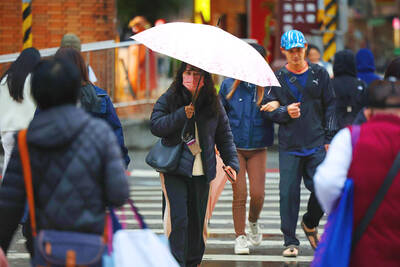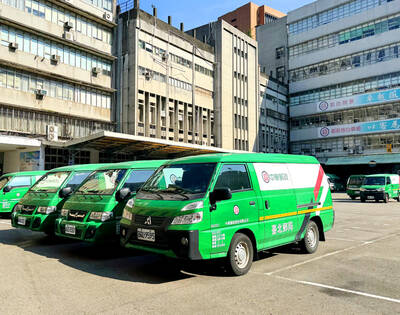An exhibition exploring the notion of the “Global South” and Taiwan’s relation to it opened on Saturday at the Taipei Fine Arts Museum (TFAM).
Museum director Ping Lin (林平) served as the chief curator of “The Secret South: From Cold War Perspective to Global South in Museum Collection” (秘密南方: 典藏作品中的冷戰視角及全球南方), with Nobuo Takamori as guest curator.
The term "Global South" refers to a set of developing nations, former colonies and non-Western cultural regions, the TFAM said.
Most of the countries comprising the “Global South” are in Southeast Asia, South Asia, West Asia, Africa, Latin America and the Pacific Islands, it said.
The museum described Taiwan’s position in the context of the “Global South” as a “paradoxical” one.
“Although Taiwan is undeniably a developing country in Asia, it has been prevented from participating in a series of cultural and political movements since the Asian-African Conference of 1955 due to the postwar political context,” it said.
Consequently, the notion of a “Global South” has been regarded as a “remote issue” for Taiwanese, it said.
“Although Taiwan is geographically situated in the northern hemisphere, the historical center of gravity for civilization, it has always been viewed as bordering on the south,” Lin said.
This ambiguity is one of the issues “The Secret South” hopes to address, she said.
The “south” alludes to a specific yet constantly changing imagination, she said, adding that the term no longer simply refers to a geographical direction or spatial dimension, but rather “implies a certain value and charm.”
“The Secret South” features the works of more than three dozen artists and researchers, with many of the works coming from the collections held by TFAM and other public institutions, the museum said.
Refugees in Tarla, a 1943 painting by Shisan Ishihara, and paintings by Taiwanese artists who traveled to Southeast Asia during the Cold War period, such as Kuo Hsueh-hu (郭雪湖), Max Liu (劉其偉) and Shiy De-jinn (席德進), are among the works on display.
Other highlights include contemporary pieces from the “Global South” and historical documents, while Taiwanese artist Yao Jui-chung (姚瑞中) and Malaysian artist Au Sow Yee have each created new projects for “The Secret South,” the museum said.
“The Secret South” is on display in the museum’s galleries 2A and 2B through Oct. 25.

NUMBERS IMBALANCE: More than 4 million Taiwanese have visited China this year, while only about half a million Chinese have visited here Beijing has yet to respond to Taiwan’s requests for negotiation over matters related to the recovery of cross-strait tourism, the Tourism Administration said yesterday. Taiwan’s tourism authority issued the statement after Chinese-language daily the China Times reported yesterday that the government’s policy of banning group tours to China does not stop Taiwanese from visiting the country. As of October, more than 4.2 million had traveled to China this year, exceeding last year. Beijing estimated the number of Taiwanese tourists in China could reach 4.5 million this year. By contrast, only 500,000 Chinese tourists are expected in Taiwan, the report said. The report

Temperatures are forecast to drop steadily as a continental cold air mass moves across Taiwan, with some areas also likely to see heavy rainfall, the Central Weather Administration (CWA) said. From today through early tomorrow, a cold air mass would keep temperatures low across central and northern Taiwan, and the eastern half of Taiwan proper, with isolated brief showers forecast along Keelung’s north coast, Taipei and New Taipei City’s mountainous areas and eastern Taiwan, it said. Lows of 11°C to 15°C are forecast in central and northern Taiwan, Yilan County, and the outlying Kinmen and Lienchiang (Matsu) counties, and 14°C to 17°C

SHIPS, TRAINS AND AUTOMOBILES: The ministry has announced changes to varied transportation industries taking effect soon, with a number of effects for passengers Beginning next month, the post office is canceling signature upon delivery and written inquiry services for international registered small packets in accordance with the new policy of the Universal Postal Union, the Ministry of Transportation and Communications said yesterday. The new policy does not apply to packets that are to be delivered to China, the ministry said. Senders of international registered small packets would receive a NT$10 rebate on postage if the packets are sent from Jan. 1 to March 31, it added. The ministry said that three other policies are also scheduled to take effect next month. International cruise ship operators

STEERING FAILURE: The first boat of its class is experiencing teething issues as it readies for acceptance by the navy, according to a recent story about rudder failure The Hai Kun (海鯤), the nation’s first locally built submarine, allegedly suffered a total failure of stern hydraulic systems during the second round of sea acceptance trials on June 26, and sailors were forced to manually operate the X-rudder to turn the submarine and return to port, news Web site Mirror Daily reported yesterday. The report said that tugboats following the Hai Kun assisted the submarine in avoiding collisions with other ships due to the X-rudder malfunctioning. At the time of the report, the submarine had completed its trials and was scheduled to begin diving and surfacing tests in shallow areas. The X-rudder,